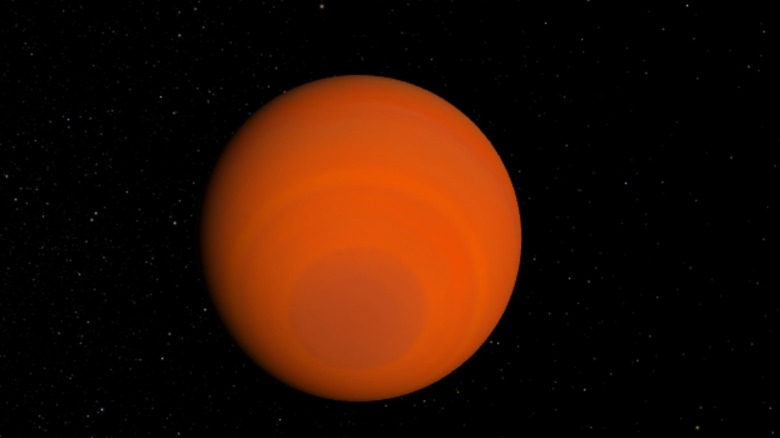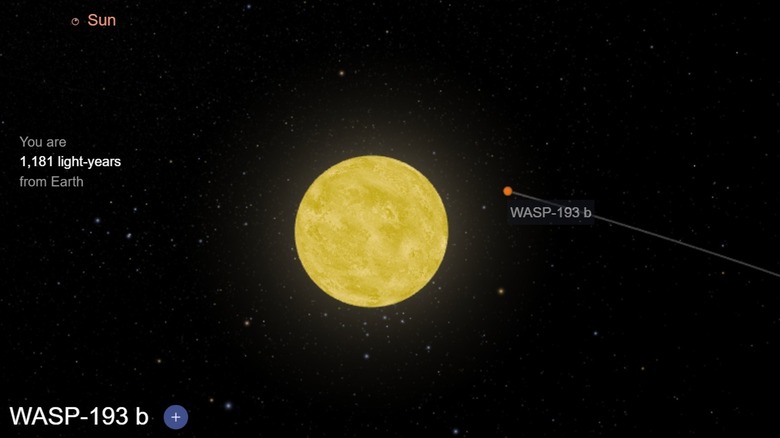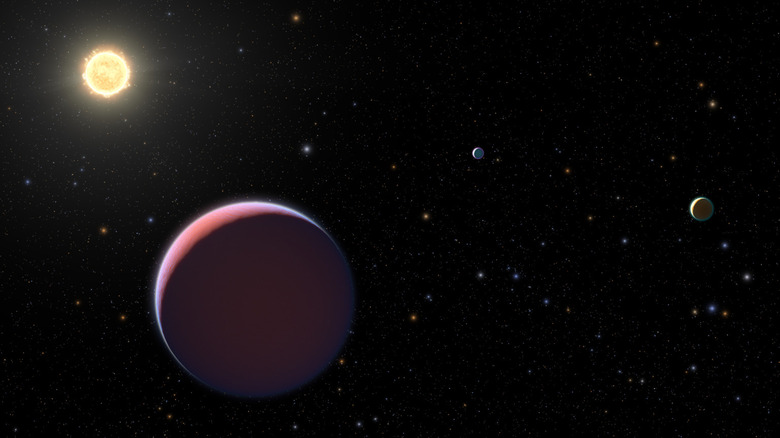Scientists Spot A Giant Cloudy Planet That's As Light As Cotton Candy
Exoplanets come in all shapes and sizes, and if recent discoveries have taught us anything, they also serve their own kind of extreme conditions. Some are so hot that it quite literally rains molten rocks, while others are dense enough to be regarded as a planet-sized chunk of diamond. The latest addition to the series is WASP-193b, a huge planet with such low density that scientists have likened it to cotton candy.
The planet, roughly 1,200 light-years away from our own cosmic backyard, is about 1.5 times bigger than Jupiter. But interestingly, it is only fractionally hefty — 0.14x the mass, to be precise — compared to the mass of our galaxy's own big fella. Calculations put the density somewhere close to 0.059 grams per cubic centimeter, which puts it in the same league as certain types of foams, low-density plastics, and aerogels.
"The reason why it's close to cotton candy is because both are pretty much air. The planet is basically super fluffy," notes Julien de Wit, co-author of the paper detailing WASP-193b appearing in Nature Astronomy journal. The planet's atmosphere mainly includes light elements like hydrogen and helium, which gives it the appearance of an extremely bloated cloudy sphere floating in place. A massive size married to a surprisingly low density has kept the research team guessing so far, as the exoplanet in question doesn't seem to fit any conventional planetary formation theories.
This cosmic cotton candy defies scientific logic
According to NASA's database of WASP-193b, the sheer size of the planet, which falls in the Super Neptune, can't be applied to the models that describe the existence of irradiated gas-filled giant planets. That is even after assuming this exoplanet lacks a solid core. Tidal heating or Ohmic dissipation have been put forward as the likely routes behind the creation of this cosmic fluff ball, which harbors temperature in the range of 1,700 degrees Fahrenheit.
It revolves around an F-type star, which in simple terms, is a main-sequence star that relies on Hydrogen fusion at its core and is known to have a yellow-white appearance. NASA's SISTINE-2 mission aims to look for signs of life in the vicinity of an F-Type star called Procyon, which is approximately 11.5 light-years away.
One theory put forward by the research paper is disk instability, which essentially says that the planetary disk fragmented and resulted in an uneven clumping together of mass. But then, the composition of the planet is another oddity. The paper suggests a combination of heat from the parent star's radiation and residual thermal energy during the formation could be responsible for the formation of a massive, low-density planet rich in hydrogen and helium. The team behind the latest research is now pinning its hopes on the James Webb Space Telescope to collect more data about the odd exoplanet and unravel the mysteries behind its light atmosphere.
There are more puff balls out there
Now, WASP-193b isn't the only light and puffy planet that has been spotted so far. The space agency has cataloged multiple planets so far with a density rivaling that of cotton candy. These exoplanets have been lovingly nicknamed "Super-Puffs" and three of them were spotted in 2012 in the Kepler 51 system back in 2012. These airy exoplanets rivaled Jupiter in size, but were about a hundred times lighter. Interestingly, the clouds on these planets could be made out of salt crystals or photochemical hazes, similar to what scientists have observed on Titan, the largest natural satellite of Saturn.
"In the end, the team concluded that the low densities of these planets are in part a consequence of the young age of the system, a mere 500 million years old, compared to our 4.6-billion-year-old Sun," notes NASA. Planets like these are expected to lose a portion of their atmosphere over time, and assumed a look closer to a conventional gas-rich planet like Neptune, a phenomenon that has been observed in our own Galaxy. But in WASP-193b's case, we will have to wait for more observation data before scientists unravel the mystery behind its peculiar atmosphere and potential formation history.


